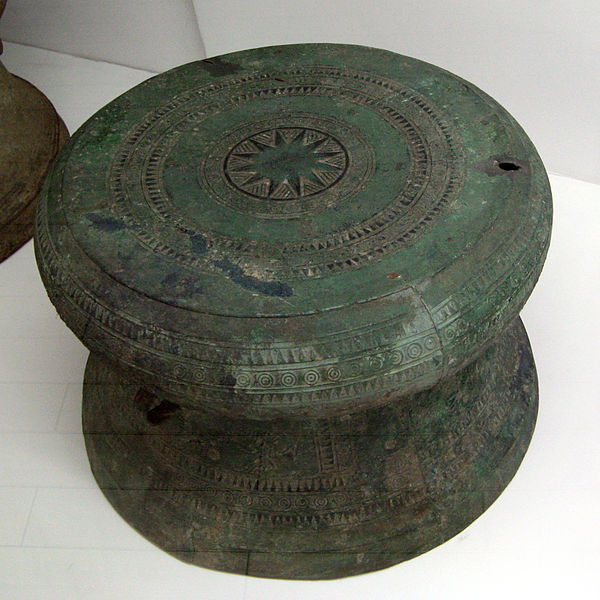
Bronze Drum
Warring States Period (475-221 BC)
Yunnan Provincial Museum, Kunming

|
Bronze DrumWarring States Period (475-221 BC)
|
Bronze drums, like the one shown here, illustrate the cultural affinity between ancient Yunnan and Southeast Asia, where such drums are ubiquitous. Other examples can be seen in the Sichuan University Museum.
The Yunnan Provincial Museum in Kunming houses an important collection of early bronzes (Warring States through Western Han period) that were excavated from royal burials at Shizhai Shan and other locations in the vicinity of Lake Dian. This part of Yunnan, whose people and language were not originally Han Chinese, had been ruled by an independent Dian kingdom from about 500 BC; bronzes from this period through middle Western Han (about 100 BC) are unique to the region, and share many characteristics with bronze artifacts of Southeast Asia. Their decoration, with predominant themes of animal combat and hunting, was also influenced by artistic styles of the Eurasian steppe.
After surrendering to Han Wudi in 109 BC, the Dian kingdom was administered as a frontier commandery of the Han empire; Dian kings were retained as local rulers. From then on, the distinctive Dian regional bronzes became gradually replaced in burial contexts by Han-style bronzes, in the type of cultural assimilation that is called "Sinification" (literally, "becoming Chinese") by Chinese historians.
For additional information, see: Marilyn Shea, Chinese Bronzes (online); and Jessica Rawson, The Chinese Bronzes of Yunnan (print).

|

|